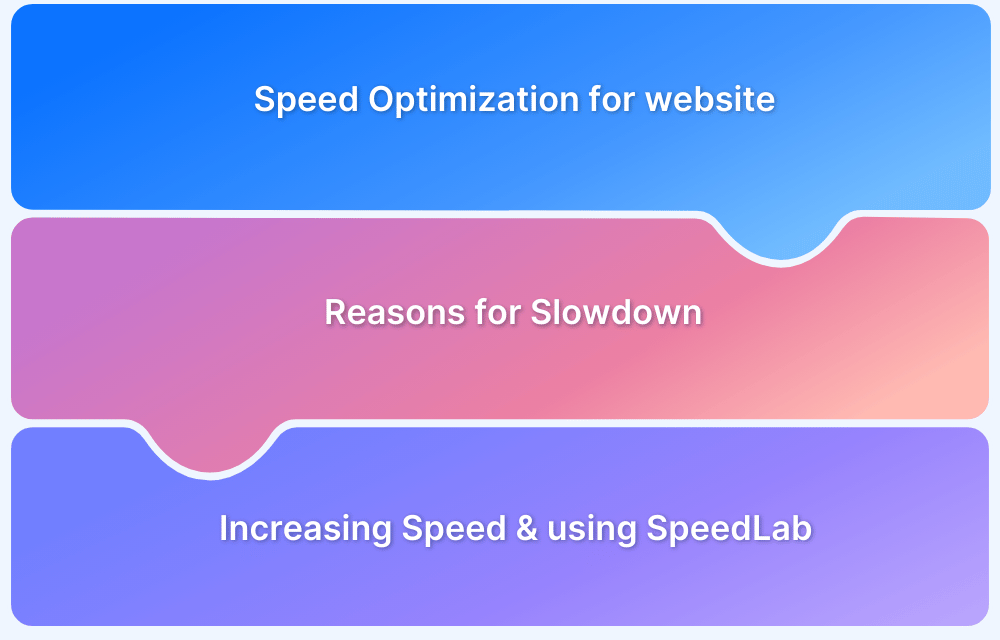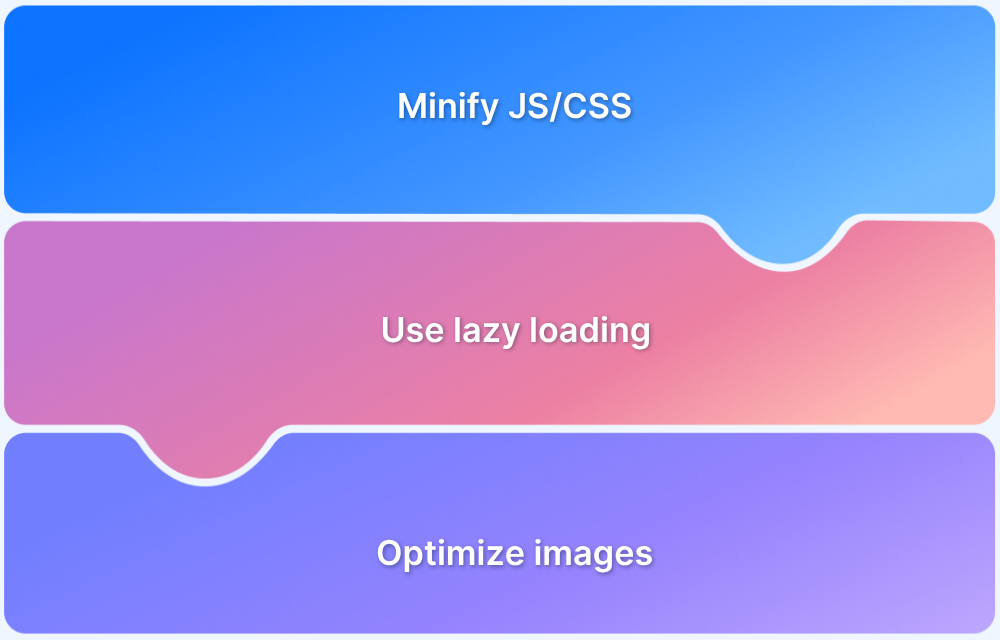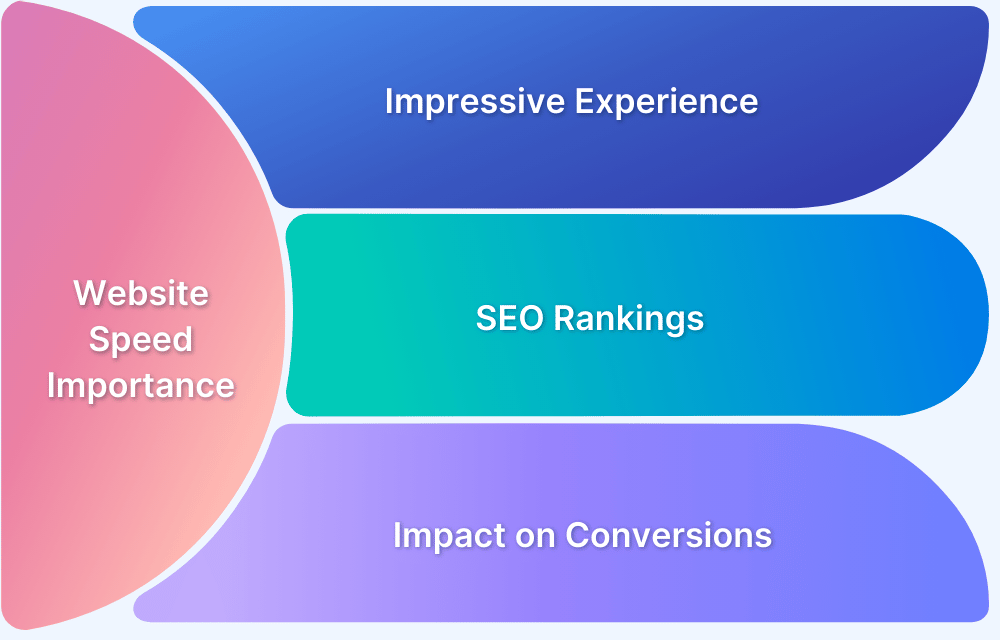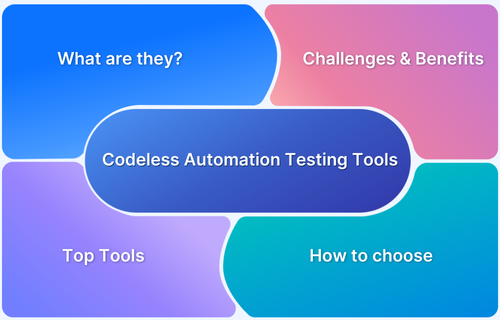First Input Delay (FID) measures how quickly a website responds to a user’s first interaction, such as a click or tap.
Overview
As a key Core Web Vitals metric, FID reflects real-world responsiveness and directly impacts user experience and engagement.
Factors Affecting FID:
- Long-running JavaScript blocking the main thread
- Heavy or unused JavaScript bundles
- Render-blocking CSS and scripts
- Large third-party scripts (ads, analytics, widgets)
- Inefficient or complex event handlers
- Poor mobile device optimization
This article explores what First Input Delay (FID) is, why it matters for user interaction, and effective ways to reduce it for better performance.
What is First Input Delay (FID)?
First Input Delay (FID) is a user-centric web performance metric that measures the time between a user’s first interaction with a webpage, such as clicking a button, tapping a link, or pressing a key, and the moment the browser begins processing that interaction.
Essentially, FID captures how quickly a page responds to the first user input, reflecting the site’s interactivity and responsiveness.
FID is especially important because it reveals real-world user experience issues related to input latency. If the browser’s main thread is busy parsing and executing JavaScript or handling other tasks, it may delay responding to user inputs, causing frustration and a perception of sluggishness. Such delays typically occur between First Contentful Paint (FCP), when initial content is visible, and Time to Interactive (TTI), when the page is fully responsive.
For example, if a user attempts to click a link while the browser is busy running long JavaScript tasks, they will experience a delay until those tasks complete. This delay time is recorded as the FID for that interaction.
Read More: Top 15 Ways to Improve Website Performance
FID vs Other Metrics (TBT, INP, TTI)
While all these metrics measure interactivity, they focus on different aspects of responsiveness:
- FID (First Input Delay): Field metric that measures the real delay a user experiences between their first interaction (click, tap, key press) and the browser’s response.
- TBT (Total Blocking Time): Lab metric that calculates how long the main thread is blocked by long tasks, often used as a proxy for FID during testing.
- INP (Interaction to Next Paint): Field metric that measures responsiveness across all interactions, not just the first, giving a more complete picture than FID.
- TTI (Time to Interactive): Lab metric that measures when a page becomes fully interactive and reliably responsive.
Read More: Top 17 Website Launch Checklist: The Essentials
Factors Affecting FID
Several key factors influence First Input Delay (FID), impacting how quickly a website responds to the user’s initial interaction. Understanding these factors helps developers optimize responsiveness and deliver a smooth user experience:
- Heavy JavaScript Execution: Large or complex JavaScript files require more time to parse, compile, and execute on the main thread, blocking the browser from responding to user inputs promptly. Excessive or unoptimized scripts extend processing time and increase FID.
- Main Thread Blocking: Long-running tasks on the browser’s main thread prevent it from handling input events quickly. Tasks lasting over 50 milliseconds can delay interaction processing and lead to higher FID.
- Third-Party Scripts: External scripts such as ads, analytics, and social media widgets may load synchronously and consume main thread resources, increasing input delays.
- Network and Server Response Time: Slow delivery of resources due to network latency or inefficient server response can delay JavaScript execution and other critical page processes, worsening FID.
- Page Complexity and Large DOM: Deeply nested or large DOM structures increase browser workload for parsing and rendering, potentially delaying interactivity.
- Excessive Event Handlers: Inefficient or too many event listeners on elements, especially those triggered frequently (like scroll or resize), can strain main thread resources and delay interaction response.
- Unoptimized Rendering: Blocking CSS and render-heavy layouts can delay focus on input readiness even if content is visible, indirectly affecting perceived FID.
Minimizing these factors by optimizing JavaScript execution, deferring non-critical scripts, streamlining DOM structure, and improving server and network performance is crucial to achieving a low, responsive FID score.
Strategies to Reduce FID
Improving First Input Delay (FID) is crucial for delivering a responsive and user-friendly web experience. Here are proven strategies to reduce FID effectively:
- Optimize JavaScript Execution: Minimize and optimize JavaScript to reduce main thread blocking. Use code splitting to load only necessary scripts and defer or asynchronously load non-critical JavaScript.
- Break Up Long Tasks: Divide long JavaScript tasks that block the main thread into smaller, asynchronous chunks, ideally under 50 milliseconds, to allow quick processing of user inputs in between.
- Use Web Workers: Offload heavy computations from the main thread to web workers, freeing the main thread to handle user interactions smoothly.
- Minimize Third-Party Script Impact: Audit third-party scripts (ads, analytics) and defer or limit their loading to prevent them from blocking the main thread excessively.
- Optimize CSS Delivery: Inline critical CSS and defer non-essential stylesheets to speed up page rendering and reduce blocking of interactivity.
- Compress and Minify Assets: Reduce file sizes by minifying JavaScript and CSS and using compression (Gzip, Brotli) to decrease load and execution times.
- Improve Server Response Time: Use fast hosting, caching, and CDNs to ensure resources and scripts are delivered quickly, preventing delays in input responsiveness.
- Implement Lazy Loading: Defer loading of images and other non-critical resources until they are needed to reduce early main thread workload.
- Avoid Excessive Event Handlers: Optimize and limit event listeners, particularly on frequent user actions such as scrolling and resizing, to avoid unnecessary main thread work.
To support your FID optimization efforts, BrowserStack Website Scanner offers a comprehensive, no-code automated website health check that covers critical performance metrics, including key indicators related to interactivity and responsiveness.
It helps detect performance bottlenecks, blocking scripts, and resource-heavy issues that contribute to input delays. By running broad site-wide scans and generating consolidated, actionable reports, BrowserStack Website Scanner empowers teams to quickly identify and address factors that impact FID and overall user experience.
Its scheduling, scalability, and ease of use make it an excellent addition to any performance optimization workflow, enabling ongoing monitoring and timely fixes to keep your site responsive
Conclusion
First Input Delay (FID) is a vital metric that reflects how quickly users can interact with a webpage, directly impacting user satisfaction and search engine rankings. By understanding its importance and implementing proven strategies, like optimizing JavaScript, minimizing third-party scripts, and improving server response times, developers can significantly enhance site responsiveness and user experience.
To streamline and scale these optimization efforts, BrowserStack Website Scanner offers an all-in-one, no-code automated solution to scan, detect, and prioritize website issues affecting performance, accessibility, and user interactions. It enables teams to quickly uncover bottlenecks and blocking resources that contribute to delays like FID, helping maintain a fast, smooth, and engaging web experience.









